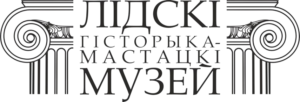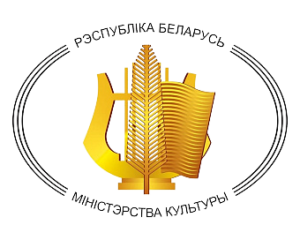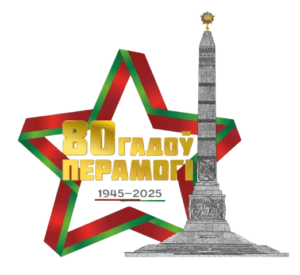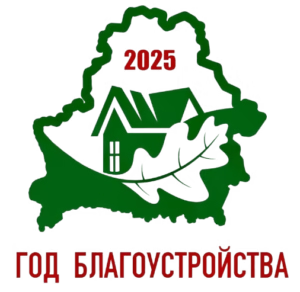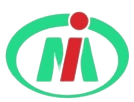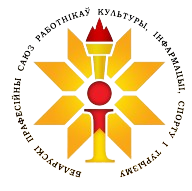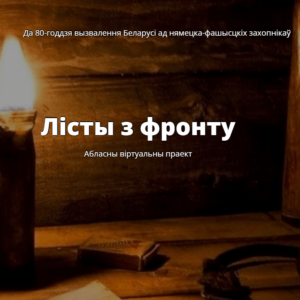From 1795 to 1915 the Lida Land was part of the Russian Empire. Before the November Uprising of 1830-31. The Russian government did not interfere with the education system that developed under the Polish-Lithuanian Commonwealth. Nobles studied in the district school of monks PR, which in the Polish time were called collegiums, traders and artisans, Jews received a primitive education in the heder at the melamedov, local peasants “most of the most” did not study anywhere. The nobles received knowledge in Latin and Polish, traders and craftsmen in Yiddish, the best of the peasants – in parafial schools – in Polish, at the Uniate churches – children of priests in Old Slavonic.
For 120 years in the city of Lida were opened and operated 20 educational institutions
The district school of monks of public relations (1804-1820, 1825-1833).
Meshchanskoye College (1834-1835).
The nobility uyezd five-grade school (1835-1858).
Jewish State School I class (1853 – 1878).
The nobility uyezd three-class school (1859 – 1865).
Parish school with a female smeni (1864-1904).
The district two-year school (1865 -1902).
Female one-class private school (1869-74).
Jewish elementary school (1878-1915).
Jewish two-class private school (1894-99).
Women’s Private School (1901-1906).
The city’s four-year school (1902-1912).,
Parish two-year school for men (1904-15).
Yeshibot (1905-1915).
Women’s private gymnasia (1906-1910).
Men’s private 4-class progymnasium (1907-15).
Jewish women’s private 4-class progymnasium (1907-1913).
Women’s private 7-grade gymnasium (1910-1915).
Higher primary school (1912-1915).
Men’s Gymnasium (1913-1915).
About the first three educational institutions the material in 2016 was put on the site lida.info.
In the continuation of the topic.
Men’s Jewish state schools and chedery.
In the XIX century, the Jewish community of Russia was the largest in the world. The traditional formation of Russian Jews consisted in studying the Talmud, the ability to count and write, the assimilation of the rules of behavior of the orthodox Jew.
December 9, 1804 Alexander I approved the “Regulations for the Jews”, which talked about equal opportunities in obtaining education: “All children of Jews can be accepted and trained, without any distinction from other children, in all Russian folk schools, gymnasiums and universities. … Those of the Jews, who have achieved their abilities at universities of known degrees of difference in medicine, surgery, physics, mathematics and other knowledge, will be recognized and produced in university degrees on a par with other Russian applicants. ”
A quarter of a century later, the Russian government discovered that the Jews retained their inner isolation. The main reasons for the isolation are Judaism and the Jewish system of education and upbringing, based on the Talmud.
August 19, 1827 Nicholas I ordered the extension of the supervision of the Ministry of National Education to all educational institutions, except military and spiritual. Private Jewish schools (Talmud-tori, chederi, yeshibots) were to report to the Ministry. However, the decision was not implemented: “This measure could not be applied to them in full, partly due to the lack of general provisions on the education of Jews, partly because of the uncertainty of the means to establish Jewish educational institutions in the forms of government.”
From the report of the Minister of National Education SS. Uvarov on March 17, 1841 found out: “The admission of Jews to our civilian schools … gave us students and students who were diligent and able to voluntarily leave all the outward signs of their tribe, although in general the number of Jews in our schools was very small until now.” That is, the Jews did not go to study at Russian state educational institutions. According to incomplete data in 1841 “238 Jews were trained in general schools”.
Count Sergei Semenovich Uvarov – Minister of the National Enlightenment (1833-49), an active supporter of the education and russification of Jews. He owns the famous triad of Russian statehood: “… Orthodoxy, Autocracy and the Nation are their own beginnings, without which it can not prosper, grow stronger and live .. in a united spirit with these principles, Russia and people’s education should be carried out.”
In the course of the educational policy of Nicholas I SS Uvarov in 1841-44. developed the concept of state education of Jews, whose tasks were “in the gradual rapprochement with the Christian population and in the eradication of superstition and harmful prejudices instilled in the teachings of the Talmud.” June 22, 1842, a Commission was established to educate Jews in Russia from two rabbis and two Jewish public figures under the leadership of the Minister. Based on the results of the commission’s work, a decision was made: to create a state (state) system of Jewish educational institutions, which, along with religious subjects, along with religious subjects, introduce general education, and streamline traditional forms of Jewish education and subordinate private Jewish schools to the supervision of the Ministry.
November 13, 1844 Nicholas I by his Decree “ordered to establish for the formation of Jewish youth special schools of two kinds: primary or first grade, corresponding to the parish, and secondary or second class, in the amount of district schools, mostly real, but for the preparation of teachers of the Jewish Law and Rabbis – Rabbinical schools, comparing them in relation to general subjects with the Gymnasiums …. To teach the law to identify in Jewish educational institutions teachers from the Jews, and for other subjects – both from Christians and from Jews, who received the right to do so in accordance with the established procedure. ”
In 1847, the rabbinical schools were opened in Vilna and Zhitomir, in the 1850s state schools were opened. In Vilna province the first state school of the 1st rank was opened in Vilna (1847), then in Lida and Sventsyanah (1853), Disney (1855), Vileika (1858). In state Jewish schools, out of 24 weekly hours, Jewish subjects were given 13.5 hours.
Along with the transformation of the Jewish enlightenment, a tax on traditional Jewish clothing (1844), a tax on wearing skullcap (1848), and finally a complete ban on January 1, 1851 for wearing Jewish clothing were introduced.
After 1855 representatives of Jewish orthodox religious circles appealed to Alexander II several times to close Jewish state schools. However, the state line for “rapprochement and eradication” remained unchanged. Jewish subjects were reduced, more and more hours were allocated to the Russian language. Gradually the Jewish schools turned into “Russian schools for Jews”.
Be that as it may, graduates of state Jewish schools formed the first generation of educated Russian-speaking Jews. In November 1861, Jews who had academic degrees were given complete freedom in choosing their place of residence. In September 1864, children of all faiths were granted access to progymnasium and gymnasium.
Lida State Jewish School I class (1853 – 1878).
The Lida State Jewish School of the 1st category was founded in January 1853. “For the maintenance of the school, on the basis of Highest approved on 18.11.1844, 1206 r. a year from the sum of candle from the Jews gathering. ” 220 rubles. was let out on hiring of a premise, the rest – the salary to the inspector and teachers.
In the 1870s, the caretaker received 250 rubles, teachers of Jewish subjects and arithmetic – for 225 rubles, calligraphy – 50 rubles. and 50 rubles. additionally.
Children were accepted from the age of 8, not more than 50 people per class. Upon admission, they had to be able to read in the ancient Hebrew language, know by heart the usual prayers and understand the first two books of the Mosaic Pentateuch. The teaching lasted two years, taught the Jewish Law, prayers, reading and writing in ancient Hebrew with the beginnings of grammar, reading and writing in Russian with the beginnings of grammar, the first four rules of arithmetic with the notion of measures, weights and money, calligraphy. Additionally taught the German language. Programs in general subjects corresponded to the programs of parish schools. At the end of the school year, tests were conducted.
The first inspector of the Lida Jewish public school was appointed provincial secretary Samuel Karlovich Nesluhovsky. For 12 years he was the immediate boss of this institution. “The main and most important duty of the caretaker is to monitor the health of teachers and the success of students in an educational and moral sense.” Private Jewish educational institutions – heders, which he is obliged to “review … at least twice a year” were also subordinated to the school inspector. At the end of the academic year, the inspector presented reports to the immediate superiors about the status of both the Jewish school entrusted to him and the heders under his jurisdiction.
Followers: Rabbi Osher Leontievich Gordon, teacher of general subjects (9.10.1865-66); the teacher of the Russian language Kivel Lvovich Pumpyansky (5.12.1868-73), the pupil of the Vilna rabbinical school Osip Ilyich Zingol (22.01.1873-76), Samuil Isaakovich Gurvich (2.10.1876-78).
In 1859, an honorary guardian was introduced for state schools. The honorary guardian of the Lida Jewish School was the city’s magistrate, the urban philistine Yosel Leibovich Brzezinsky (19.01.1862-78).
Teaching Corps. He taught the rites of Jewish law and religious and moral teaching (12.02.1853-57), the rites of faith (1858-61), the teacher of Jewish subjects (1862-63, 1866), the rites of the Jewish law and the religious and moral doctrine (1864-65) – Favish Movshovich Kabachnik. The teacher of Jewish subjects – Bomshtein (1862), Draisin (1863). Teacher of common Jewish subjects -Mossey Kramnik (10.08.1863-64), general subjects Movsha Kletskiy (10.10.1864-66). Teachers of Jewish subjects pupils of the Vilna rabbinical school Yakov Favishovich Kabachnik (9.12.1866-76) and Israel Khaimovich Borkum (1.08.1877-78). Teacher of the Bible, prayers, Hebrew and exercises in German Shmuil Leibovich Rabinovich (1853-56); teacher of the Bible, prayers and so on. (1857-61), the teacher of Jewish subjects (1862-63) Beira Gordon. The supernumerary teacher of calligraphy (1858-61), the teacher of Jewish subjects (1862-63), the teacher of calligraphy (1864-78) – Iosel Zelmanovich Turetsky. Teachers of arithmetic – Osip Singel (from 18.10.1868) and Chaim Abramovich Raskes (10.01.1869-78).
Osip Zingel (Zingol), after graduating from the Vilna Rabbinical School in January 1873, was appointed caretaker of the Lida Jewish School. All teachers and caretakers, except the very first, are Jews.
Grant in the 1870s: the caretaker – 250 rubles, teachers of Jewish subjects and arithmetic – for 225 rubles, calligraphy – 50 rubles. and 50 rubles. additionally.
In the 1877/78 school year, 62 pupils were trained in the school.
The Lida State School of the 1st rank graduated in the late 1860s Meilakh Noselevich Pupko (1859-1934), a merchant of the 1st guild, owner of the Lida Beer Factory, a high-level manager who created Lida brewery European fame. In the early 1870s, in the upper circles, the opinion was formed that the existence of Jewish educational institutions “as an isolated system of education of a purely national-confessional type” is unproductive. In 1873, it was decided to transform state-owned schools of the 1st grade into primary Jewish schools with the stated goal of “teaching the Jews in the Russian spirit and attaching them to a common culture, without confusing Christians.” This measure, ultimately, was to promote the involvement of Jews in ordinary general education schools.
Before Lida this decision came five years later in the form of the opening of a class school with the preparatory class. Hours were shortened for the study of the Jewish religion and government control over the content of training was strengthened, and so were the same two years of study.
Lida Jewish Primary School with the preparatory class (1878-1915).
The Lida Jewish primary school, unchanged, lasted 37 years.
The honorary guardians: the Vilnius merchant of the 1st guild Meilach Koenigsberg (1880-87), the honorary citizen Moses Zhirmunsky (1887-1900), the merchant of the 2nd guild Gershon Aronovich Pupko (1900-14), the merchant of the 1st guild Davyd Lvovich Strugach (1914- 15).
Heads: Gerasim Isaakovich Zarkhin (1878-87), Grigory Moiseevich Katsenelson (1887-92), Israel Kagan (1892-94), honorary citizen Osip Yu. Burstein (1894-1902), Ilya Savchich Tsypkin (1902-15).
Assistant teachers: Alexander Borisovich Dronzik (1878-81), Semyon Galpern (1884-93), Abram Markovich Sheingold (1893-1915). Teachers of the preparatory class: Wulf Burde (1879-86), Abram-Simha Livshits (1886-90), Aaron Dubovsky (1890-1902), Yakov Ovseev Yatsovsky (1902-07), Davyd Ionovich Gernshtein (1907-15). In 1892, the staff of the school included a full-time physician, in this capacity there was a doctor Lazar Shirvindt (1892-94), Abram Yakovlevich Damskiy (1894-96), Abram Izrailevich Varshavsky (1896-1915).
Heads, assistant teachers, teachers of the preparatory class, all without exception of the Jewish faith, graduates of the Vilna Jewish Teachers’ Institute.
In 1879, the school trained 45 children, in 1897-99 years -102 pupils.
Students of the Jewish school
On the maintenance of a class school in 1879, 2221 rubles.70 kopecks were released: salaries of the head of 350 rubles, canteens – 190 rubles, additional – 75 rubles; the salary of an assistant teacher is 200 rubles, dining rooms – 100 rubles; the salary of the teacher of the preparatory class is 240 rubles, the apartment is 75 rubles. Payment for the room -220 rubles. The balance of funds was allocated to textbooks and prizes.
Honorary guardian of the school in 1914-15. was an outstanding engineer chemist and merchant of the 1st category Davyd Lvovich Strugach. It is included in the TOP-100, 50 and even top-30 Belarusian entrepreneurs in 1913. Managed the partnership created by his father. He owned yeast-distilleries in Lida and Oshmyany and a share in the Riga syndicate association of JSC “Yeast”.
Lida two-class private Jewish school (1894-1899)
There were 4 school years. Contributors: R. Pass (1897/98), B. Lapides (1998/99). Teachers O. Burshtein (1897-99), B. Lapides (1897-99), O. Sirochinsky (1897/98), O.Pillu (1898/99). In the year 1897-99, 65 pupils were trained.
Headers
The lowest Jewish school, called heder, in Lida functioned from the sixteenth century. Heder was a private home school, lessons were held in the teacher’s house. 3 to 9 pupils were engaged. From the age of 3 they studied the ABC and reading of the Hebrew texts, studied the Pentateuch with comments from the age of 5, and studied the Talmud in depth since 8 years. Classes were held from early morning until seven in the evening. Training was paid. The vast majority of Jewish children were educated in heders. In Vilna, Grodno, Minsk provinces and Bialystok region in 1841 there were about 2500 home schools. In the academic year 1897/98, there were 86 headers in the Lida district, in which 996 pupils were studying.
Until the second half of the XIX century, only boys studied. At the beginning of the twentieth century, in one of these Lidskie heders, Iosif Dolinsky, a future professor of VGIK:
Iosif Lvovich Dolinsky (1900-1983)
“We usually studied with teachers in their apartments. I remember three teachers … The first … taught us the Jewish alphabet, reading and writing. He was an amazingly kind person, thin, with big eyes, not at all young, with a goat half-sowd beard … The most surprising thing was that if he saw the diligence of the student, ingenuity, skill, then suddenly from somewhere on top fell to the table to this pupil candy … he was at that time behind the disciple, exclaimed: “See, God sent you sweetness for your diligence!” At the same time he rejoiced and added: “God sees everything!” … As soon as we, the children, were free to read on -Drevneevreyski, began the teaching of “Humesh”, that is, according to the Old Testament veto: the five books of Moses, then the book “Kings”, Psalms, Proverbs of King Solomon and the other sacred books.
The transition from class to class sometimes meant the appearance of another teacher, in whose apartment we used to practice. Teachers, from whom we studied, were quiet, calm people, treating us kindly, in a fatherly way. But one teacher remembered me angry, and as we thought, a malevolent person, he was angry, he often shouted at us, perhaps, he was engaged in assault and assault, which at that time was already a rarity. The training in the heder, and in other schools was separate, the boys and girls did not study together … No matter how hard the teacher tried, the training in the heder was scholastic, completely unrelated to the present, to life. The study of the sacred books did not give anything to understand reality. ”
The Ministry of Public Education tried to control the chederers. Special procedures for the issuance of certificates for the right to study were introduced; normative and methodological and organizational and administrative documents were approved, the aim of which was to strengthen state control over melamed and heder. These attempts did not bring any particular results.
Main sources.
Dolinsky I. Memory. M. 2000. P. 23-25.
Kolyatse M.Ya., Kozhenevskaya M.G. The policy of the Russian government in the field of Jewish education in the second half of the Х1Х-early XX century. Electronic resource: lucykolotsey@rambler.ru
A commemorative book of the Vilnius Province on 1854, 1855, 1856, 1857, 1858, 1959, 1860, 1861, 1862, 1863, 1866, 1867, 1869, 1870, 1873, 1894, 1904, 1908, 1910, 1914.
The memorable book of the Vilnius Academic District on 1874, 1875, 1876, 1877, 1877/78, 1879/80, 1880/81, 1882/83, 1890/91, 1892/93, 1893/94, 1895/1896, 1896/97, 1897/98, 1898/99, 1900/901, 1901 / 902,1903 / 904,1905 / 906, 1907/908, 1908/909, 1911/12, 1913, 1914, 1915 academic years.
Collection of resolutions on the Ministry of Public Education. T. 2: Reigning
Emperor Nicholas I. 1825-1855. Branch 1-e: 1825-1839. St. Petersburg. 1875.
Collection of resolutions on the Ministry of Public Education. T. 2: Reigning
Emperor Nicholas I. 1825-1855, Department 2: 1840-1855, St. Petersburg.
Valery Slivkin,
Senior Researcher of the Lida Historical and Art Museum.
